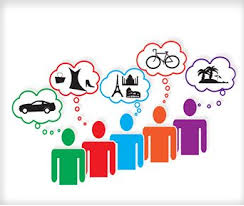This is an excerpt from: “Market Segmentation, Targeting and Positioning”
How to Cite: Camilleri, M. A. (2018). Market Segmentation, Targeting and Positioning. In Travel Marketing, Tourism Economics and the Airline Product (Chapter 4, pp. 69-83). Springer, Cham, Switzerland.
 Demographic segmentation involves dividing the market into groups that are identifiable in terms of physical and factual data. The demographic variables may include; age, gender, income, occupation, marital status, family size, race, religion and nationality. These segmentation methods are a popular way of segmenting the customer markets, as the demographic variables are relatively easy to measure. For example, the age range for business travellers may usually span from their late twenties to their mid-fifties.
Demographic segmentation involves dividing the market into groups that are identifiable in terms of physical and factual data. The demographic variables may include; age, gender, income, occupation, marital status, family size, race, religion and nationality. These segmentation methods are a popular way of segmenting the customer markets, as the demographic variables are relatively easy to measure. For example, the age range for business travellers may usually span from their late twenties to their mid-fifties.
Younger employees are travelling for business purposes and their buying habits are completely different than their older counterparts. On average, millennials took 7.4 business trips in the last year, compared to 6.4 for Generation Xers and 6.3 for baby boomers (Skift, 2018). Younger travellers are less likely to book air travel based on loyalty programme perks. They are more likely to book their flight according to the airline service and the customer experience they offer. Moreover, young travellers are more likely to use room share services like Airbnb, than other segments (Skift, 2018). However, for the time being, major hotel brands are not under any serious threat.
At the same time, Uber and other ridesharing services are becoming mainstream across all age groups, as they may be cheaper than taxis (Pew Research, 2016). The age range in the leisure market is a very broad one and quite different to that in the business market. Children particularly can play an important role in leisure travel, as they travel abroad on holidays with their families. Young people in their early to mid-twenties too are prepared to spend their disposable income on travel before they take on the responsibilities of family life. At the other end of the scale, we have those who are retired from work, are in a relatively good health and in good financial position which allows them to travel.
In the past, middle-aged males dominated the business travel market. However, recently, the advertising and promotion of airline services have increasingly targeted female business travellers. This market controls 60% of U.S. wealth and influences 85% of purchasing decisions (Skift, 2014). The female gender is high-tech, connected, and social. They represent 58% of online sales (Skift, 2014). To maintain their competitive edge, travel brands must start focusing their campaigns to better target women. The leisure travel market is far more balanced in terms of gender. In fact, in older categories of leisure travellers, that is over the age of sixty, women outnumber men due to their longer life expectancy (Boston Globe, 2016).
The ability to travel for leisure purposes greatly depends on an individual’s income. Leisure travel is a luxury which may be foregone when times are financially difficult. Generally, as personal income rises, the demand for air travel increases. However, should there be a recession, money belts are tightened, and less leisure trips may be taken. This is an example of a concept known as income elasticity (this topic will be discussed in Chapter 8). Income elasticity can be defined as the relationship between changes in consumers’ income level and the demand for a particular item.
You must be logged in to post a comment.